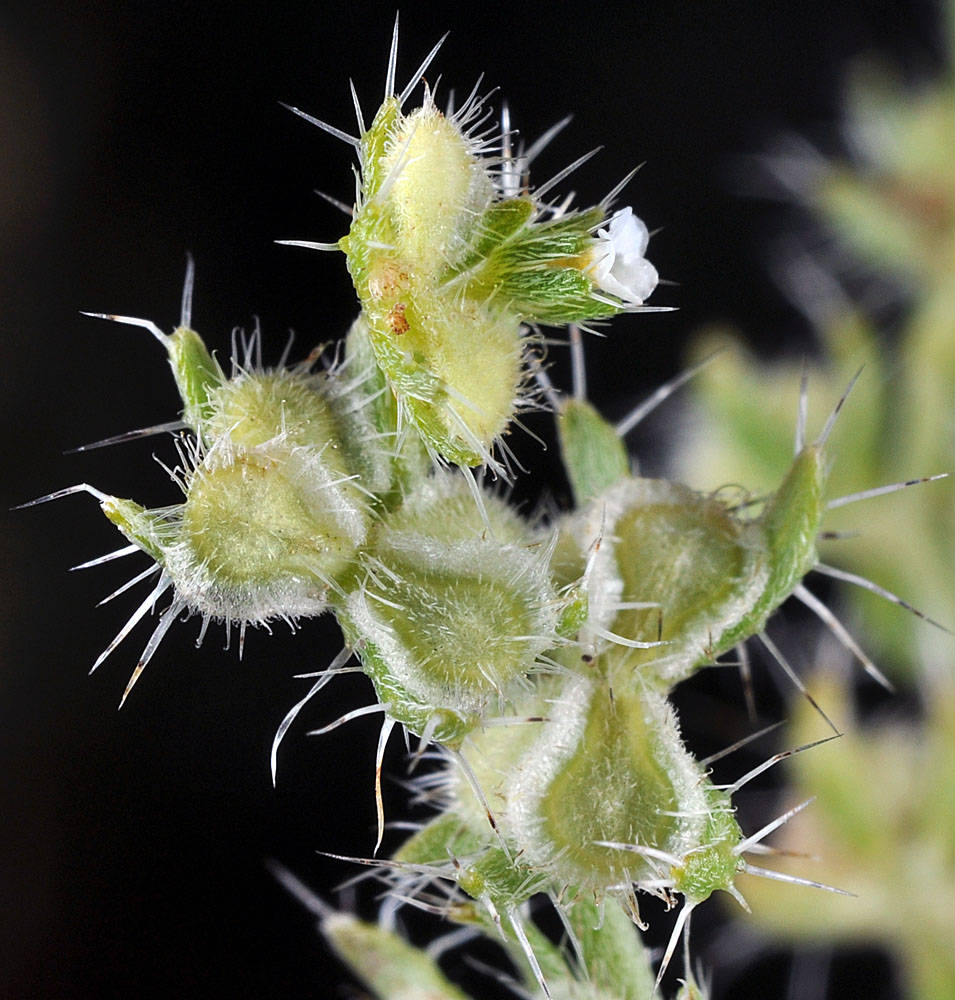
Stems ascending to erect, simple or branched, (2)4–10(23) cm.
Leaves linear to linear-spatulate, 5–30 × 0.2–2.3 mm.
pedicels ascending to recurved, 0.7–2.8 mm in fruit.
Flowers chasmogamous; calyces radially symmetric, lobes 3–4.5 mm in fruit, > nutlets, strigillose and sparsely setose; corolla limbs 0.5–1.5(2) mm in diameter.
Fruits monomorphic, flat; nutlets usually heteromorphic, rarely homomorphic, straight, round to ± obovate, (1.5)2–4 mm, abaxial surface with scattered uncinate bristles; wings of 3 consimilar nutlets thin and scarious, spreading, 0.4–0.8 mm wide, surface sparsely to densely hairy, wing margins ± entire, with ± scattered uncinate bristles; wings of dissimilar lower nutlets nearer to inflorescence axis narrower, < 0.2 mm wide, or absent.
2n=24.
Sandy to coarse gravelly soils, often from granitic substrates, in washes, bajadas, slopes, roadsides, desert and sagebrush scrub, pinyon-juniper woodlands, dry grasslands. Flowering May–Jul. 800–1900 m. BR, Owy. CA, ID, NV, WA; southeast to NM, south to Mexico. Native.
I.M. Johnston (1924) recognized three varieties within Pectocarya setosa: variety aptera, variety genuina, and variety holoptera. Johnston stated that variety genuina is the typical form, with usually three of the four nutlets having a wide, scarious wing. Variety aptera is a homomorphic, unwinged form from mid-elevation desert transition habitats in southern California, while variety holoptera, from the western Mojave Desert, has fruits with all four nutlets equally winged.